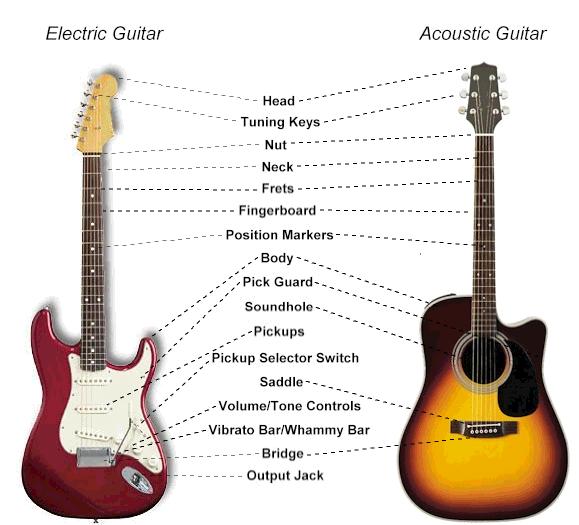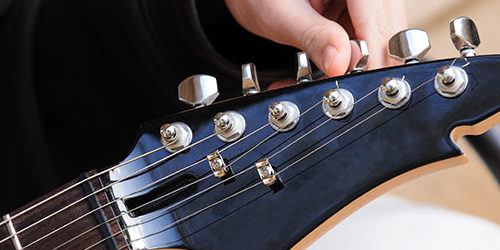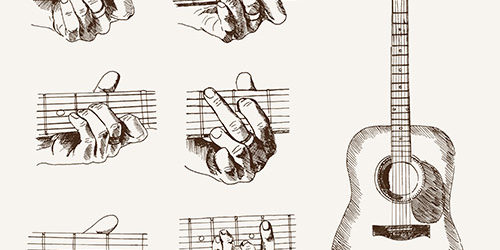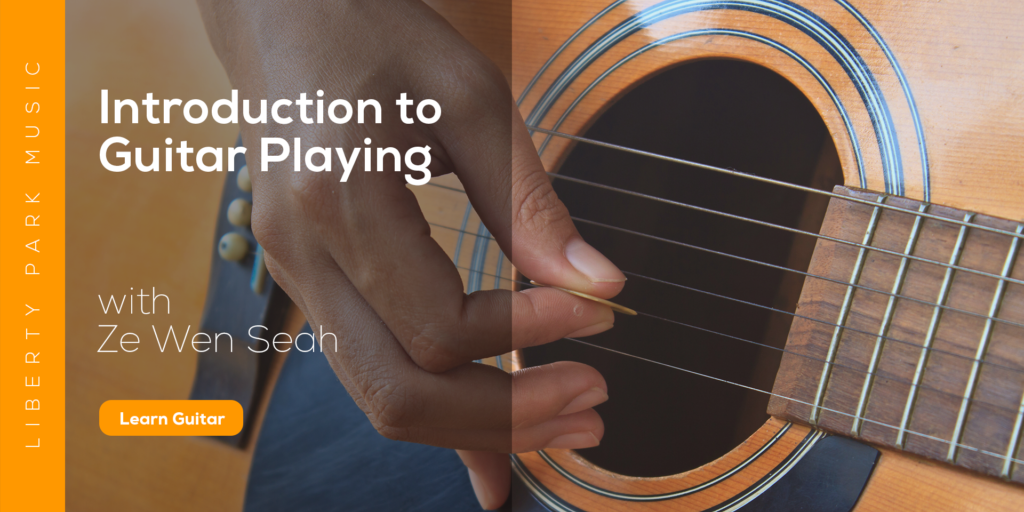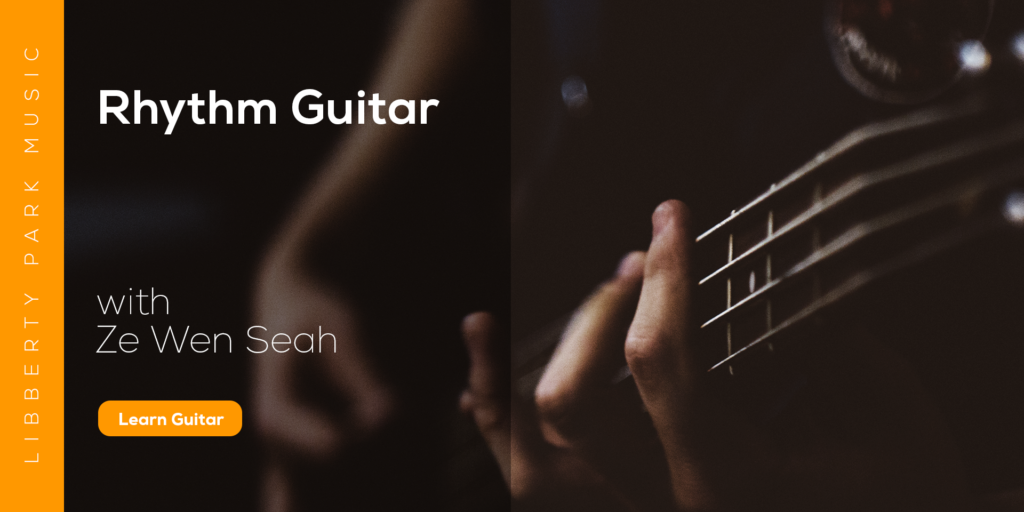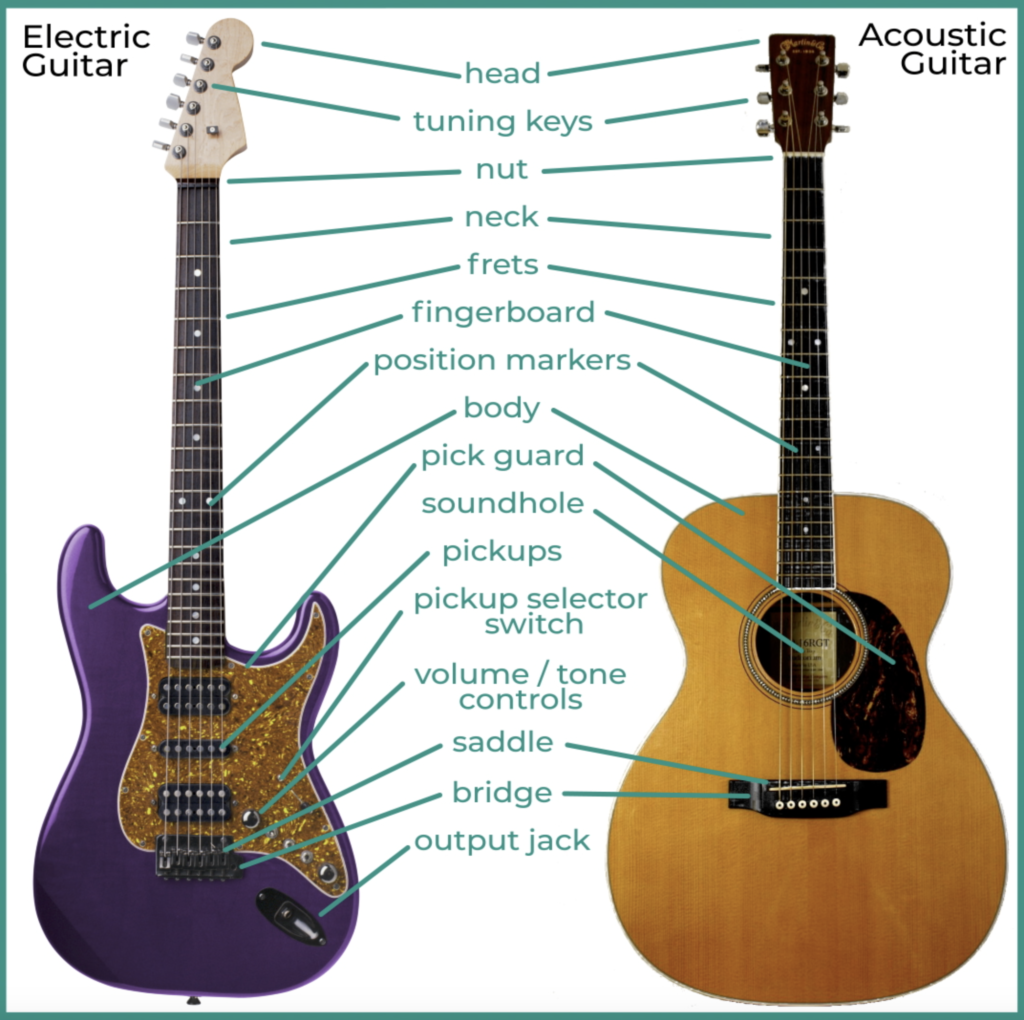
Now that you’ve bought a guitar and been getting ready to start your first lesson. What’s next?
If you don’t have proper vocabulary, it would be hard to know where to place your hands or talk to your fellow guitarists about anything. Therefore, one of the first things you need to learn is the names of different parts of the guitar, so you can follow video lessons more easily and accurately.
We’ll go over parts that are common to all guitars, parts specific to electric guitars, and finally string numbers and names.
If you are interested in learning about terms beyond those discussed in this article, check out our article on guitar terminology.
Here are the parts that all guitars have:
- Headstock
- Tuners
- Tuning pegs
- Nut
- Neck
- Fretboard
- Frets
- Body
- Soundhole
- Bridge
- Saddle
- Bridge pins
Acoustic Guitar
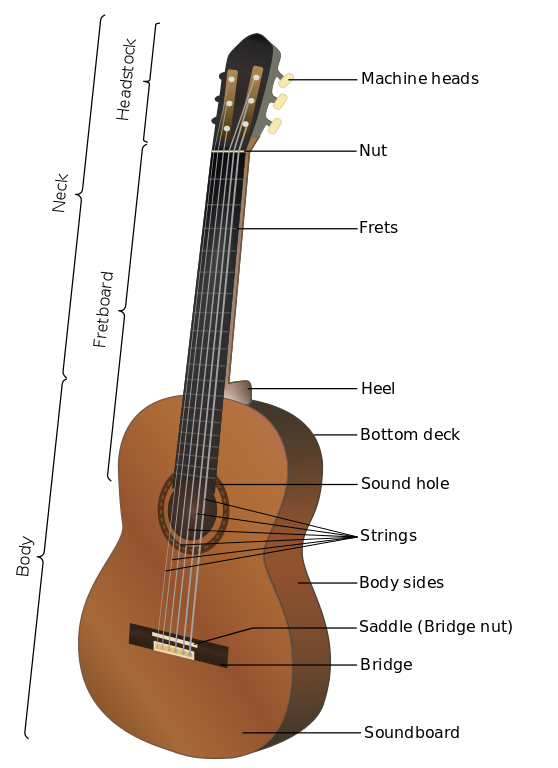
The first section of the guitar is called a headstock, on which you will find tuners and tuning pegs. The tuning pegs allow you tune the guitar by tightening or loosening the wires.
The middle, narrow section of the guitar is called the neck. The nut is the white strip closest to the headstock. The front side of the neck is called the fretboard. And the metal wires on the fretboard are called the frets, which help your fingers find the right spots.The biggest part of the guitar is called the body, which has a hole in the middle called the sound hole. On the body, the bridge, the saddle, and the bridge pins hold the wires in place.
Electric Guitar

For those of you who play an electric guitar, you will find most of these parts above on your guitars. But the body section of an electric guitar has some different parts from those on an acoustic guitar, such as:
- Pickups
- Potentiometer
- Pickup selector switch
- Input jack
Pickups capture the string vibrations and convert sounds through amps. Potentiometer controls volume and tone. The pickup selector switch chooses the pickups and therefore determines the sound. The input jack is where you plug in your keyboard.
String Numbers and Names
Finally, let’s go over the string numbers and names. There are six strings on the guitar. The thickest string that is closest to you is called the sixth string, and the thinnest one that is at the bottom the first string. The middle four strings are, of course, fifth, fourth, third, and second strings. In terms of string names, they are E, A, D, G, B, and E from the sixth string to the first.
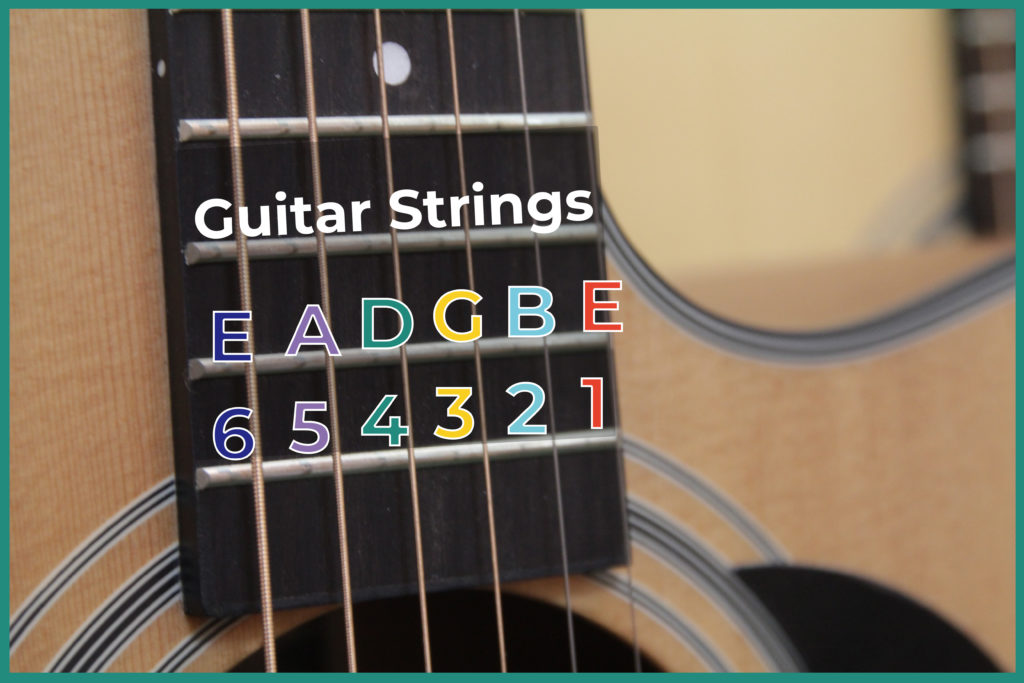
These are the basics but also essentials for you to start your guitar journey. If you'd like a detailed explanation about guitar parts, you can also watch our video on the anatomy of guitar here.
To see the full lesson, on which this article is based, please go to the course page.
Improve your guitar playing with more articles like this!
Free monthly guitar tips and advice delivered straight to your inbox!
About the Author: Ze
Ze first began his journey playing original music and top 40s pop tunes around the country's popular venues. Eventually, through the music of John Mayer, he found a strong attraction to blues music. Ze has years of experience teaching beginners and intermediate guitarists. Currently with Liberty Park Music he is teaching Introduction to Guitar Playing for Complete Beginners, Rhythm Guitar to learn about strumming, chords and more, Guitar Essentials as a fast-track review course, and lots of Song Lessons on pop and rock hits.
About Liberty Park Music
Liberty Park Music is an online music school offering lessons for piano, guitar, drum kit, and music theory. We love sharing what we know, so on this blog, you will find useful guides and articles on a variety of musical topics. Sign up for our free newsletters if you would like to see more articles and stay informed.
To find out more about our online courses: Piano courses, Guitar courses, Drum kit, Music Theory. First 30 days are free for all members. So come join and explore. Cancel anytime.

